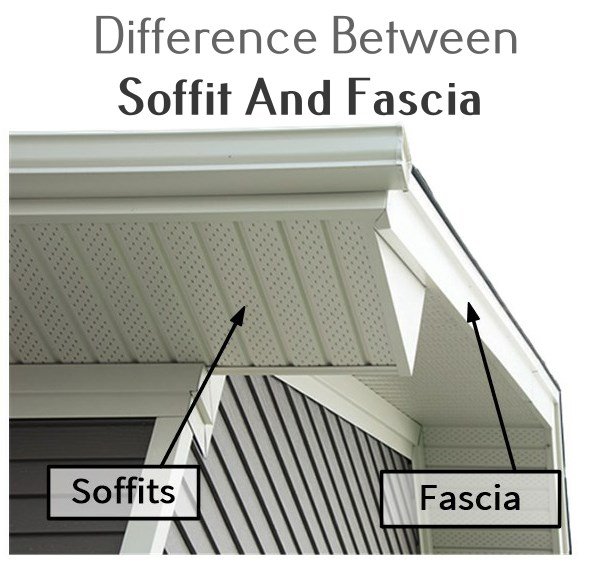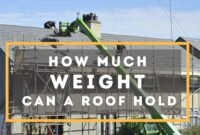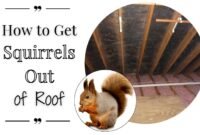People often confuse soffit and fascia, even though they serve entirely different purposes. Therefore, learning the difference between soffit and fascia can benefit you when installing roofs.
Installing roofs requires the use of soffit and fascia. By installing these two components together, you can prevent molds and mildew from developing in your home’s rafters due to moisture. Additionally, they provide air ventilation and protect the hard-to-paint surfaces of your home.
Is there any difference between soffit and fascia?
Yes, Both are entirely different. Let’s discuss it one by one.

1. What is Fascia on a House?
Firstly, the fascia is the exposed horizontal board that connects the roof and the house’s exterior walls. Often referred to as the roofline, this long straight board is visible from street level and plays a crucial role in enhancing your home’s curb appeal.
Fascia boards, whether wood or vinyl fascia, protect the roof trusses from weather damage. Fascia boards can be attached directly to external walls if the eaves have flush edges.
Those boards are what hold your guttering in place. Besides keeping the guttering, they protect the edges of the roof’s rafters as they descend. Over the fascia board, you can also install a vent.
Read also: Truss Roof vs. Rafters
2. What is Soffit on a House?
On the other hand, the soffit is located on the underside of the roof, where the roof meets the outer walls. Typically, soffit boards are visible from street level and are integral to the roof system. They play a key role in ventilating the attic space and protecting the roof decking from moisture.
A soffit is necessary when there is a gap between the roof and the eaves, called a closed eave. Also, having a ventilated soffit will allow for more airflow into the roof space.
More Differences between Soffit And Fascia
As a result of the above definition, we can distinguish the difference between soffit VS fascia. Next, we’ll discuss both differences in greater detail.
1. Materials for the Soffit and Fascia
Generally, wood and vinyl work well for soffits, but aluminum and vinyl are equally good options. Usually, vinyl or aluminum soffit is available in various colors to match a house’s exterior.
Likewise, fascia boards are mostly wood but may come in plastic or aluminum. Furthermore, plastic and aluminum fascias are available in many different colors.
Read also: How to Choose the Best Material for Soffit and Fascia?
Choosing the right materials for your soffit and fascia is crucial. Composite materials and wood grain finishes are popular for their durability and aesthetic appeal. Regular maintenance of these components is essential to prevent long-term structural damage and to preserve the integrity of your home’s exterior
2. The purpose of soffit and fascia
The purpose of soffits refers to the underside of a building element, such as an arch, projecting cornices, and stair treads. A soffit is, for instance, the horizontal aluminum or vinyl piece covering the underside of an overhanging roof.
Then, fascia is the board attached to the ends of buildings and structures that facilitate the attachment of exterior elements such as gutters. The fascia boards enclose the space between the soffit and the roof.
3. The durability of the Soffit and Fascia
Third, soffits are more at risk from the elements than other parts of your home. Torn shingles, damaged flashing, and malfunctioning gutters constantly expose the soffit to water.
Notably, soffits should be replaced when they show signs of damage or rotting. Also, if birds and squirrels can get into soffits, they will nest there and damage them.
On the other hand, a fascia board does not suffer water damage as severely as a soffit. However, rot can result in it detaching, requiring replacement.
Vinyl soffits are popular for soffit materials due to their durability and low maintenance, but fiber cement soffits are also a good option. Proper soffit venting is crucial to ensure proper airflow at the top of the fascia and prevent moisture damage.
Compliance with Building Codes
When installing a metal roof, it’s important to ensure that the soffit and fascia comply with local building codes. This compliance is essential not just for safety but also for the overall performance of the roof system. Proper soffit and fascia installation can prevent problems with installing a metal roof over an existing asphalt shingle roof.
Summary
Home exteriors are incomplete without soffits and fascias. The soffit and fascia, in the end, contribute to the safety and functionality of rooftop structures while also adding to the aesthetic appeal of a residential property’s architectural design.


